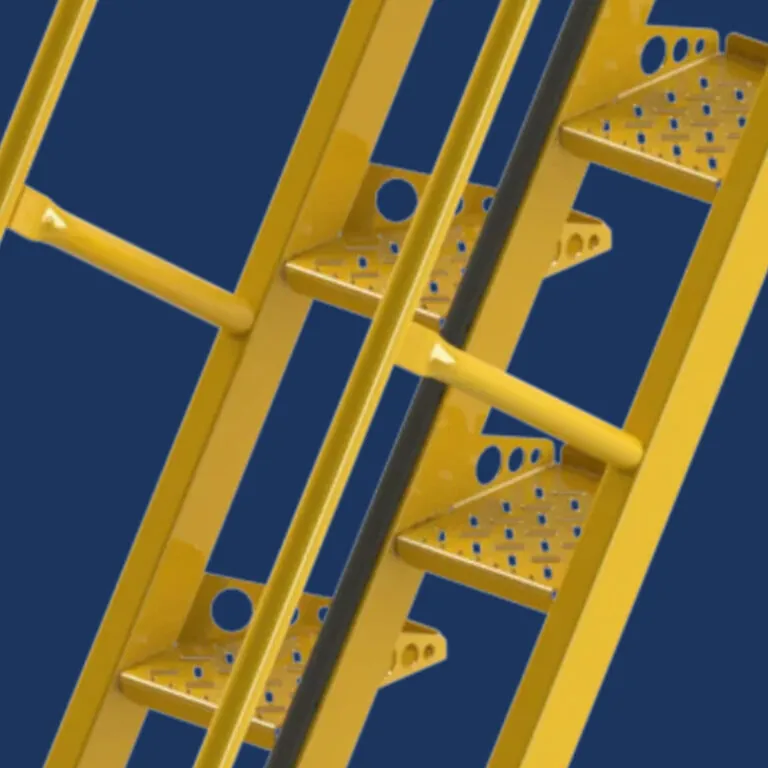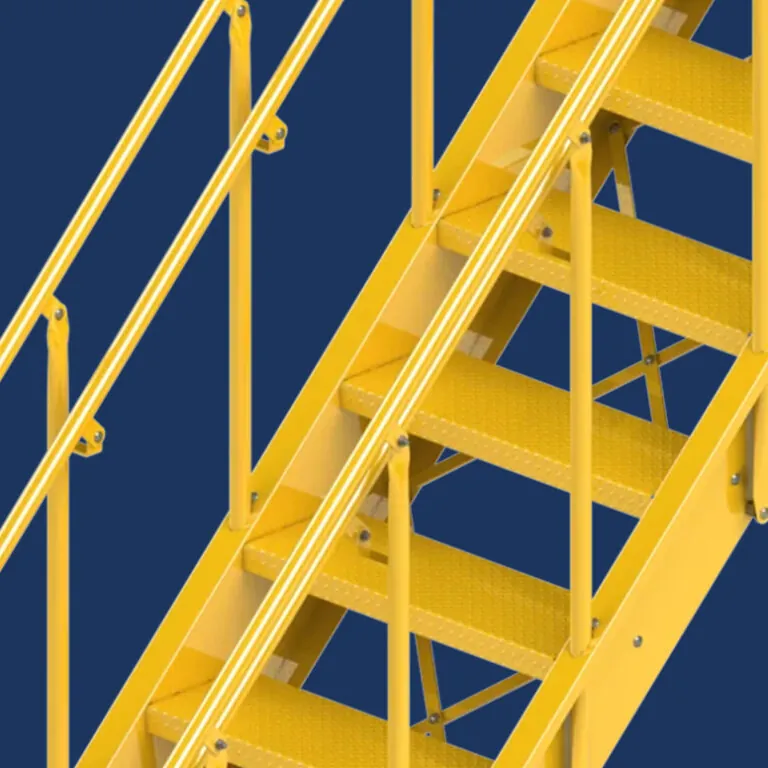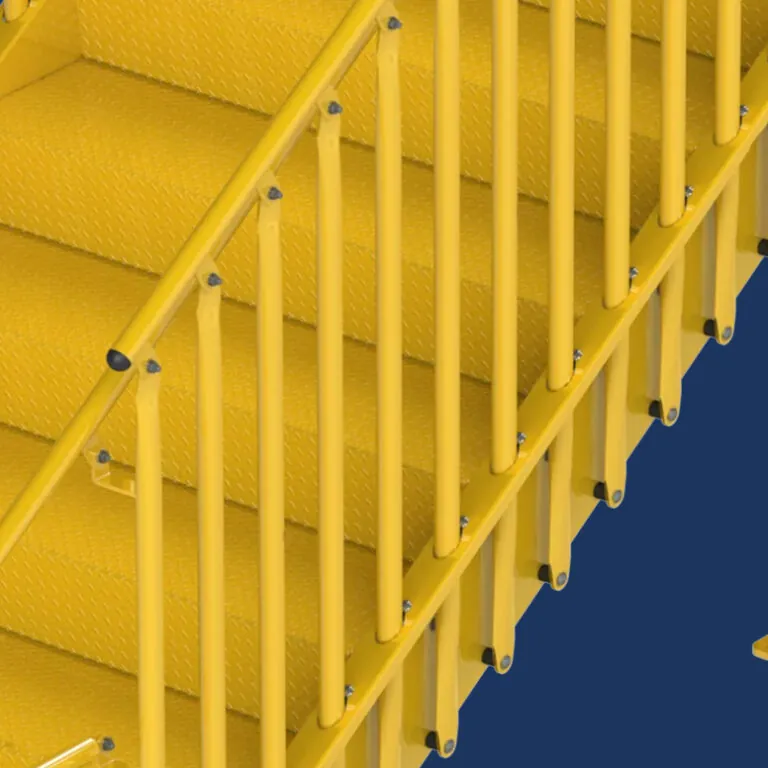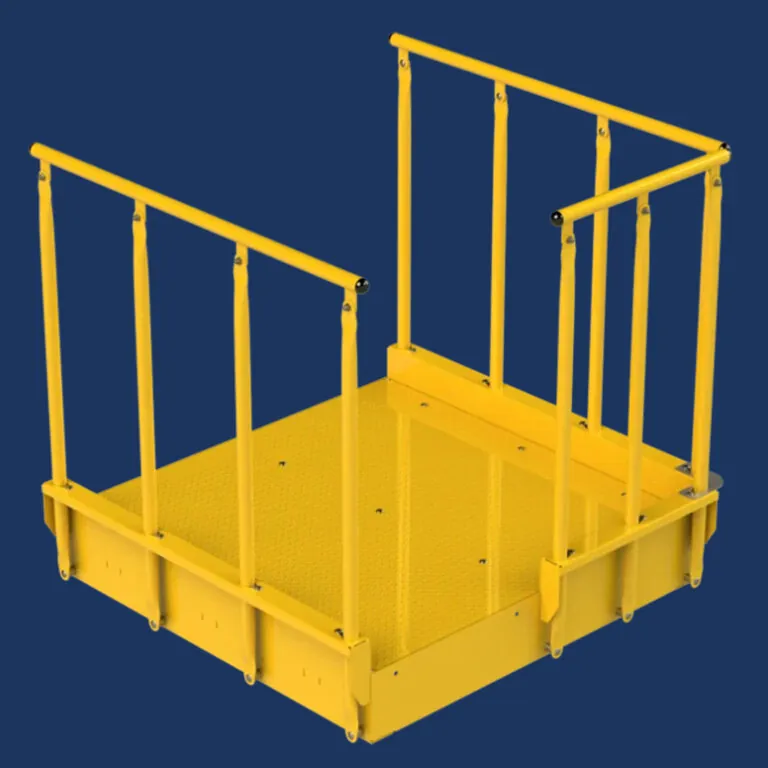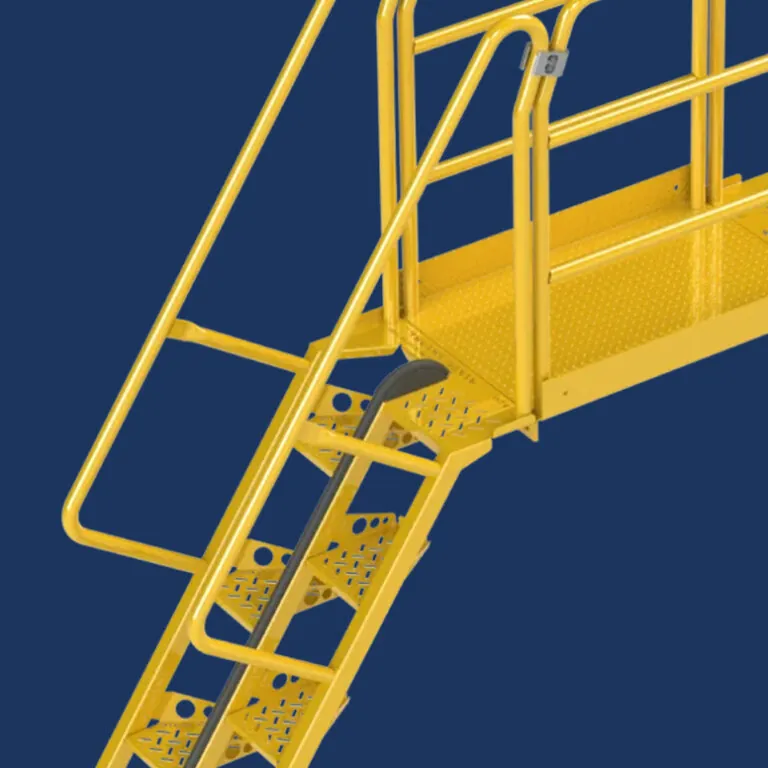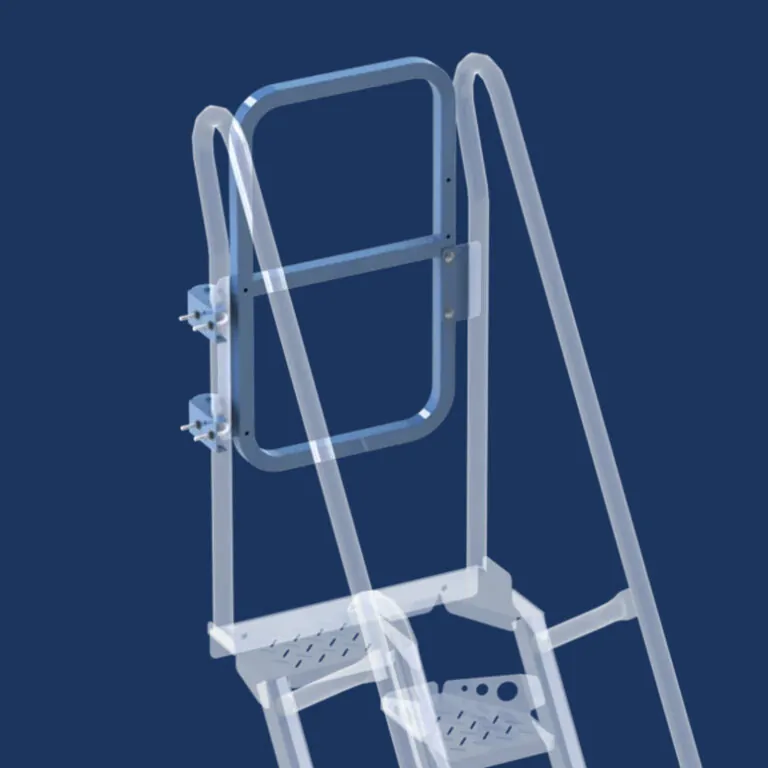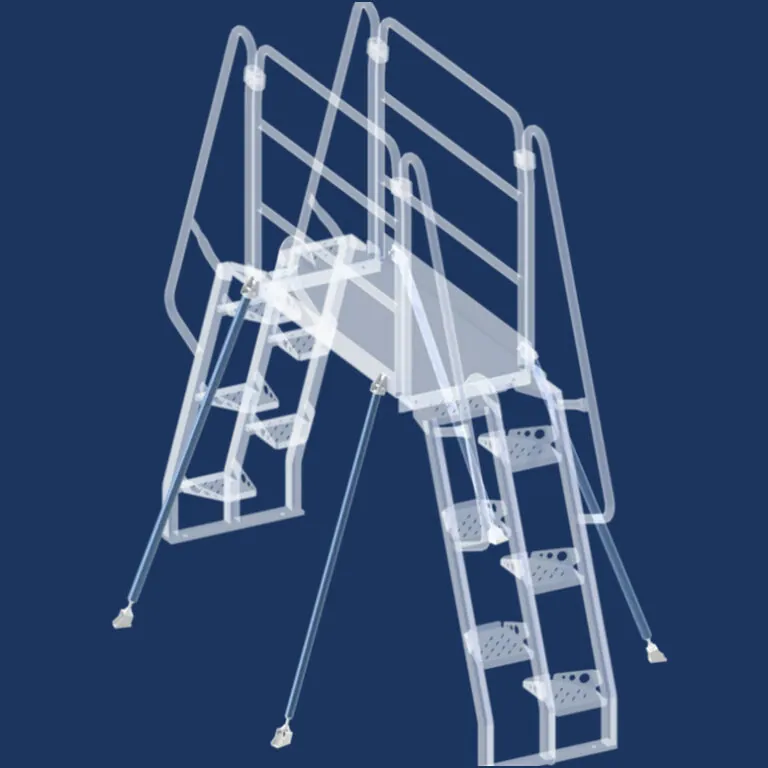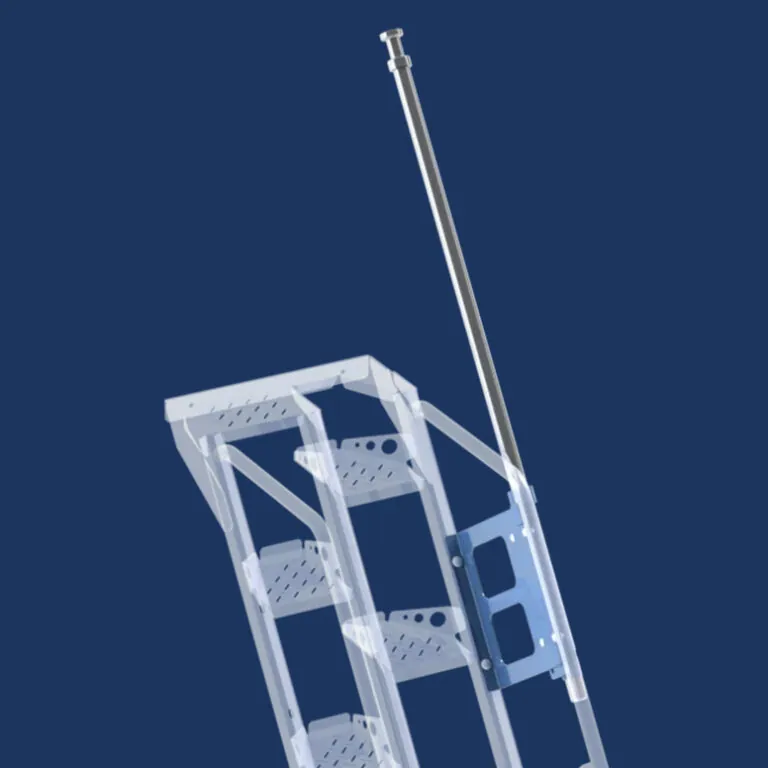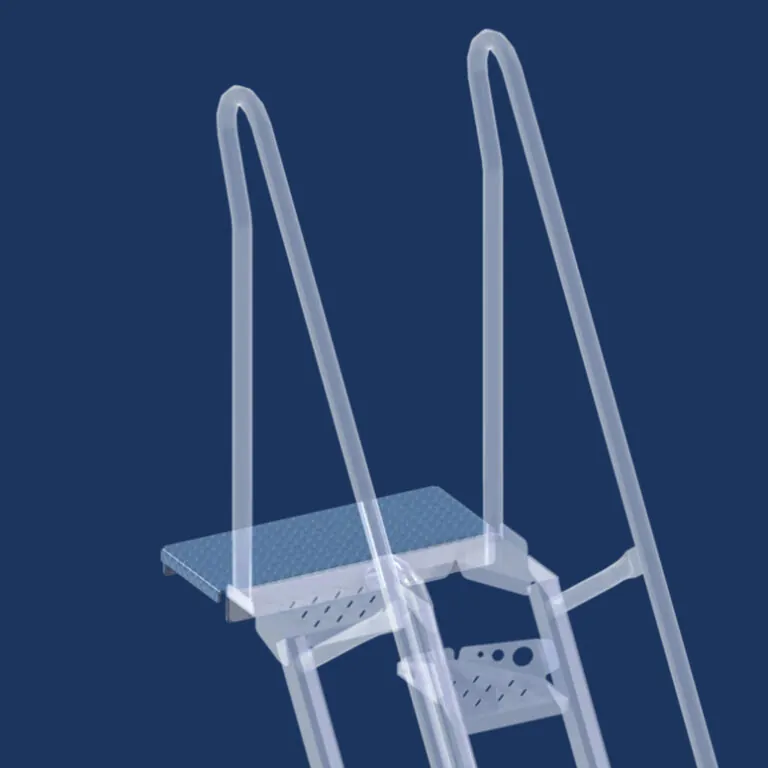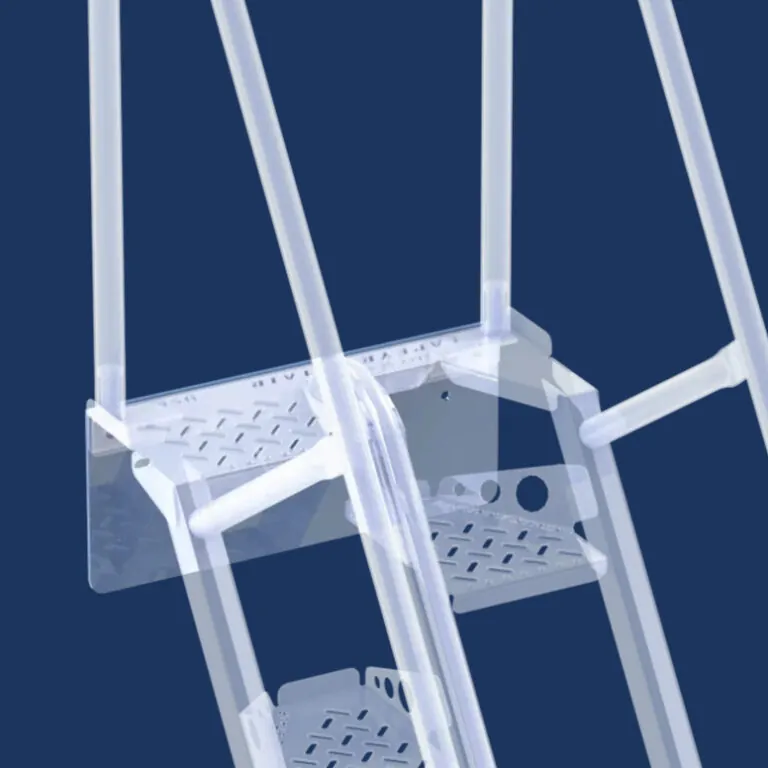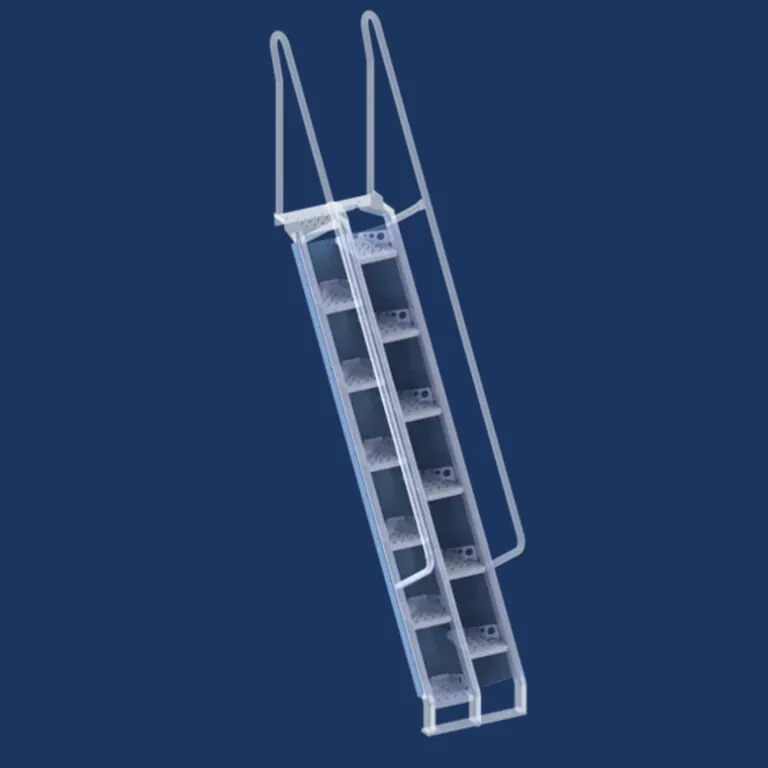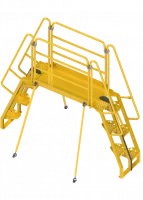Does the Alternating Tread Stair and Platform meet OSHA or IBC compliance?
Yes, for applications where space is tight or restricted.
OSHA: Alternating tread stairs are allowed when a standard stair is not feasible for regular and routine travel between levels, including access to operating platforms for equipment.
IBC: Alternating tread stairs are allowed as a means of egress from small mezzanines, guard towers, observation stations, and control rooms, and as access to unoccupied roofs.
Can I remove one rail from an alternating tread stair?
In a word, no.
You cannot side step off of an alternating tread stair. Nor can you modify the top of the rail to step off. If access is required, we recommend a work platform to access equipment.
What are appropriate applications for an ATS?
How much time do you have?
As mentioned previously, for applications when a standard stair is not feasible, the Alternating Tread Stair is not only compliant but invaluable. This list of applications can at times feel endless, but a few popular uses include conveyor crossover stairs, equipment access stairs, stair towers, work platforms, roof access and egress, and mezzanine access.
What material and finish is best for outdoor use?
How outdoor is outdoor?
We recommend the use of hop-dipped galvanized carbon steel for most, if not all outdoor applications. This will reduce the powder-coated carbon steel from fading or rusting.
Can the Alternating Tread Stair be used for residential purposes?
In a word, yes. But...
The 2018 International Residential Code (IRC) states:
“Alternating tread stairs are allowed to be used as an element of a means of egress for lofts, mezzanines, and similar areas of 200 gross square feet or less, where such devices do not provide exclusive access to a kitchen or bathroom.”
Is the Alternating Tread Stair safe?
That's why we invented it.
What hardware do I need to install your alternating tread or industrial/commercial stairs?
One 3/4" deep socket.
You’ll benefit from a bolt-driver and a wrench of course.

